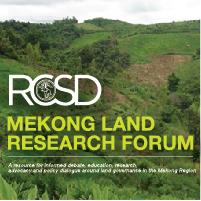Resource information
To date, REDD+ projects in Laos have made relatively conservative choices on driver engagement, focusing on smallholder-related drivers like shifting cultivation and small-scale agricultural expansion, to the exclusion of drivers like agro-industrial concessions, mining concessions and energy and transportation infrastructure. While these choices have been based on calculated decisions made in the context of project areas, they have created a pair of challenges that REDD+ practitioners must currently confront. The first is lost opportunity. By not engaging industrial drivers of forest loss, REDD+ misses an important chance to engage with high level economic decision making. This has implications not only for climate change mitigation, but more importantly for efforts to make Laos's current trajectory of natural resource-intensive development more socially, environmentally and economically sustainable. The second challenge is more immediate. Due to the political-economic circumstances under which forest loss occurs, there is a significant gap between loss that is planned and loss that can be accounted for under REDD's "national circumstance" allowances for planned deforestation. This means that REDD's positive impacts on mitigating forest loss, to the extent that they occur, may be swamped by planned but unaccountable forest loss, and thus difficult or impossible to verify. Thinking bigger on issues from driver engagement to spatial planning and concession regulation to land tenure and rural livelihood possibilities thus presents not only a series of opportunities, but a series of imperatives.


